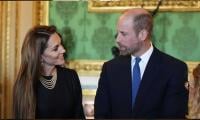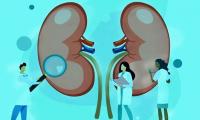Logic behind the langar
The Langar Policy is one of several policies under the Ehsaas umbrella, in its Safety Net category. This policy is being implemented in the public-private partnership mode, as part of which private charities and trusts will be supported to operate langars (soup kitchens) at designated government land/premises.
The policy is predicated in the understanding that many welfare organizations in the country, already providing meals to the destitute at some scale, have capacity to upscale further significantly, if strategic support is provided by the government.
Pakistan scores very high in philanthropic giving. According to estimates, more than Rs300 billion is channelled to welfare, annually. However, up until now, the government and welfare organizations have been siloed. There has been no strategic approach to collaboration. Ehsaas aims to change that, so that the expertise and resources of reputed welfare organizations can amplify with government support.
With regard to langars, the question is: what sort of government support is needed? To this effect, three areas have been identified. The first is logistic support because currently welfare organizations often face severe resistance in setting up langars where needed most. This happens because of market dynamics and reluctance of local administration due to fear of encroachment on prime public lands. The second way in which the government can play its role is by setting safety and quality standards, and the third is by disseminating information widely.
It has therefore been decided to support selected reputable organizations that have a proven track record of providing meals at scale, and facilitate their access to government land/premises in a predicable manner. Areas where this can work best include bus stands, industrial areas, railway stations, and places where labourers tend to congregate. The langars established will be tagged in the Ehsaas App (to be launched soon). This will allow the government to create awareness about their locations, enabling millions of destitute to benefit daily. And this would be at zero cost to the government.
This is quite a departure from the standard government style of execution, where ministries want control of execution, paving the way for corruption and inefficiency.
Based on this policy approach, an agreement was signed with the Saylani Trust to open 112 langars across the country. The prototype one was opened in Islamabad; Thar will be the focus for the next set of langars. The Saylani Trust already provides over 70,000 meals a day and with government support this will be doubled. Under the agreement, the expectation is that the trust will provide healthy and nutritious meals, ensure quality of food, cleanliness in the premises; and that in each langar, hand-washing will be promoted, trans-fats will not be used in cooking, salt will be kept to a minimum, and nutrition guidelines adopted by Ehsaas will be followed.
The framework of the Ehsaas Langar Policy will also enable other reputed long-standing langar-running NGOs to partner with the government over time. We will refine the model based on implementation experience. If at any stage government funding is needed, budgetary approvals, and compliance with the Public Procurement Regulatory Authority rules will be ensured.
We have started with langars but the scope of the policy to engage the private sector in ‘welfare activities’ will later extend to other areas, guided by evidence – orphanages, protection homes, schools for the marginalized, shelters for the homeless, etc. We believe public-private synergy in a context of unprecedented giving in Pakistan can significantly scale up the work of welfare organizations, benefitting millions. Hence, an overarching Ehsaas public-private engagement policy is also under development.
Overall, the government is aware that one isolated action, policy or initiative isn’t the answer to tackling poverty, which is why the Ehsaas strategy has more than 134 mutually-reinforcing actions, designed to target different groups. Safety net initiatives are for the lowest rung – stipends for women; new policies for orphanages, disabled, shelter homes, and child protection; and Tahafuz to protect against catastrophic risks.
To help people graduate out of poverty, the policy windows include the National Poverty Graduation Initiative, financial inclusion strategy, and prize funds (first wave announced yesterday) for innovative solutions such as the new design of Thela, and garbage collecting rickshaw to create jobs are the bottom of the pyramid. Similarly, labour protection is another stream in Ehsaas, as is human capital development under which financial access to health and education are main instruments (Insaf card, need-based undergraduate scholarships, and education stipends).
As an integrated whole of government programme, Ehsaas is being executed step-by-step. Each intervention helps to reinforce the other, while we simultaneously also work on making programme improvements based on implementation insights.
To help with Ehsaas’ execution, a new ecosystem had to be built – a national survey (ongoing), digital payment system, new ministry, financing arrangements, IT systems, Delivery Unit, oversight committees, Ehsaas governance and integrity policy, and partnerships policy – a massive task in its own right.
As far as langars are concerned, we know the evidence is compelling in a context. We know that they lessen despair among the homeless. They restore dignity and self-reliance to those that will otherwise go hungry, and they contribute to grassroots activism and social cohesion with food security and nutrition aims. They also provide jobs to those involved in the operations.
The prime minister is personally committed to ensuring that no one goes to bed hungry in Pakistan – and the government will work hard to realize that vision.
The writer is the special assistant to the prime minister on poverty alleviation and social protection.
Twitter: @SaniaNishtar
-
 2026 Golden Globes: Nikki Glaser Mocks Leonardo DiCaprio's Notorious Dating Habits
2026 Golden Globes: Nikki Glaser Mocks Leonardo DiCaprio's Notorious Dating Habits -
 Prince Harry 'loved' Seeing Charles, Eyes More Meetings With King: Source
Prince Harry 'loved' Seeing Charles, Eyes More Meetings With King: Source -
 Chad Michael Murray Admits 2000s Fame Could Have 'destroyed' Him
Chad Michael Murray Admits 2000s Fame Could Have 'destroyed' Him -
 Emma Stone Reflects On Diane Keaton's 'most Valuable' Lesson
Emma Stone Reflects On Diane Keaton's 'most Valuable' Lesson -
 Kanye West Once Paid $1 Million Per Day To Record Album: Here's Why
Kanye West Once Paid $1 Million Per Day To Record Album: Here's Why -
 Prince Harry Hopes To Show Archie, Lilibet Where He 'grew Up'
Prince Harry Hopes To Show Archie, Lilibet Where He 'grew Up' -
 Jacob Elordi Names Childhood Crushes Including A Major 60s Star
Jacob Elordi Names Childhood Crushes Including A Major 60s Star -
 Kristin Davis Dicusses Fate Of Her Sex And The City Character
Kristin Davis Dicusses Fate Of Her Sex And The City Character -
 Noah Wyle Gushes Over 30-year Bond With George Clooney: 'Real Touchstone'
Noah Wyle Gushes Over 30-year Bond With George Clooney: 'Real Touchstone' -
 Zara Larsson Steps Up Criticism Against 'evil' Policies
Zara Larsson Steps Up Criticism Against 'evil' Policies -
 Adam Sandler Jokes About Aging As He Accepts Career Honour
Adam Sandler Jokes About Aging As He Accepts Career Honour -
 Royal Stalker Cases Increase Following Harry, Meghan's Marriage: Report
Royal Stalker Cases Increase Following Harry, Meghan's Marriage: Report -
 Sarah Ferguson Eyes Princess Diana’s Private Letters In Bid To Secure Future
Sarah Ferguson Eyes Princess Diana’s Private Letters In Bid To Secure Future -
 Andrew Plots Secret Sales Of Royal Jewels Amid Royal Lodge Eviction
Andrew Plots Secret Sales Of Royal Jewels Amid Royal Lodge Eviction -
 Abbott Elementary Star Chris Perfetti Hints At What To Expect From Season 5
Abbott Elementary Star Chris Perfetti Hints At What To Expect From Season 5 -
 Prince William Always Ready To Step Up: ‘He’s Barely Able To Contain His Fury When Kate’s Involved’
Prince William Always Ready To Step Up: ‘He’s Barely Able To Contain His Fury When Kate’s Involved’



